8 Nuts You Should Skip and 5 That Totally Miss the Health Hype
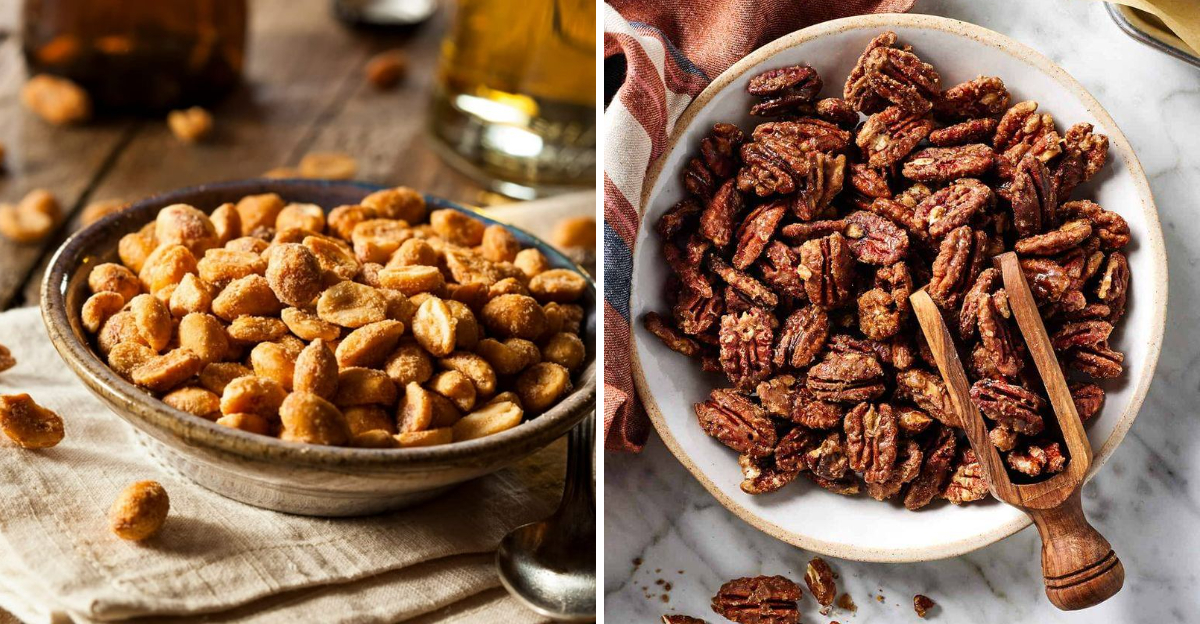
Nuts have a solid rep as a go-to healthy snack, and for good reason—they’re packed with good fats, protein, and fiber. But not all nuts are created equal. Some are overloaded with salt, sugar, or oils. Others are just coasting on a health halo they didn’t really earn. Here are 8 nuts (or nut-based snacks) you might want to skip, plus 5 that are more hype than health.
1. Honey-Roasted Peanuts

Peanuts with a twist of sweetness often lure snackers, but honey-roasted varieties come with hidden pitfalls. Coated in sugar, salt, and oil, these taste like candy for a reason. The balance tips more towards sweet indulgence than smart snacking.
They may satisfy a sugar craving, but at a cost to nutritional value. The added oils and sugars mean you’re not just getting the natural goodness of peanuts.
Think of them more as a treat than a healthy choice. Enjoy sparingly if the craving strikes.
2. Wasabi Almonds

Spicy and addicting, wasabi almonds are a snacker’s delight but often come laden with unexpected extras. Loaded with MSG, artificial flavoring, and sodium, they pack a punch in more ways than one.
A handful quickly turns into a few, and before you know it, sodium intake skyrockets. The addictive spice masks the hidden flavor enhancers.
While the initial kick is thrilling, the excess sodium and artificial additives make them a less-than-ideal snack. Moderation is key to enjoying without overindulgence.
3. Salted Mixed Nuts (with Peanuts as Filler)
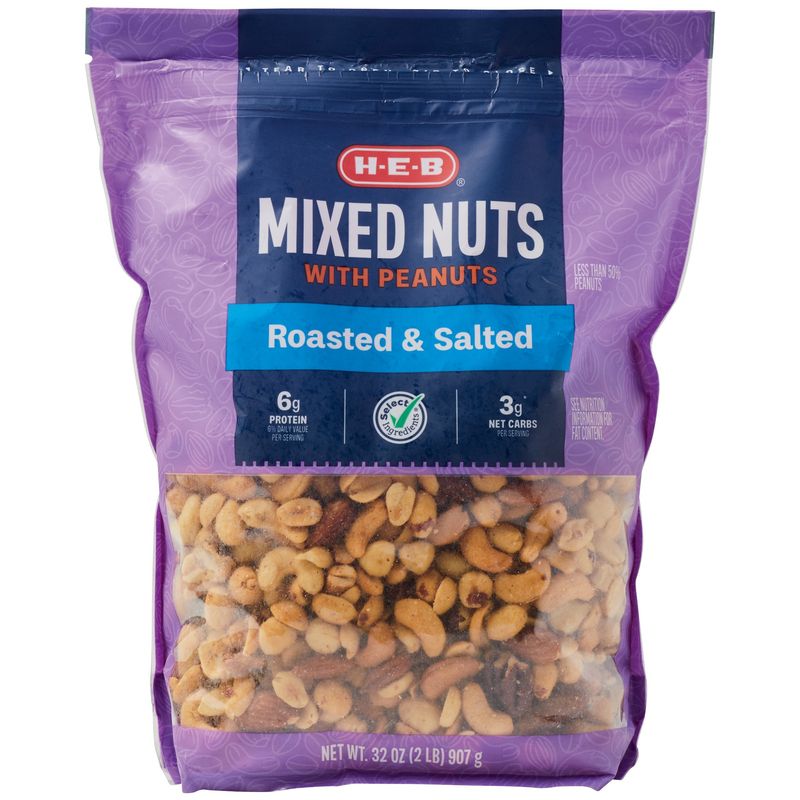
Salted mixed nuts might sound like a convenient snack, but they often come with a catch. Usually filled with cheap peanuts and topped with a hefty dose of salt, they prioritize quantity over quality.
The premium nuts, like almonds or cashews, are often sparse, making appearances as rare surprises. The overwhelming flavor is salt, overshadowing the natural goodness of the nuts.
If you’re after variety and quality, making your mix at home could be a better option.
4. Chocolate-Covered Almonds
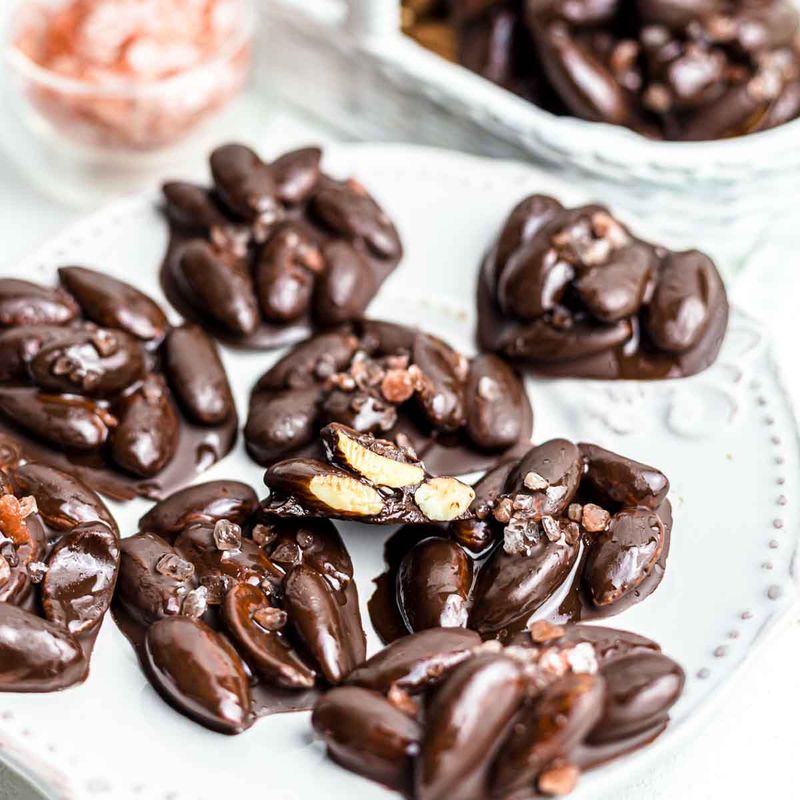
Chocolate-covered almonds might look tempting, but they are more dessert than snack. The rich chocolate coating does more than add flavor—it adds sugars and calories that overshadow the almond’s natural benefits.
While almonds are nutritious, the sugary shell makes them less so. The balance between chocolate and nut doesn’t favor health.
Think of them as an occasional treat rather than a snack. They serve the sweet tooth well but don’t fulfill a healthy snacking role.
5. Sweet Glazed Pecans
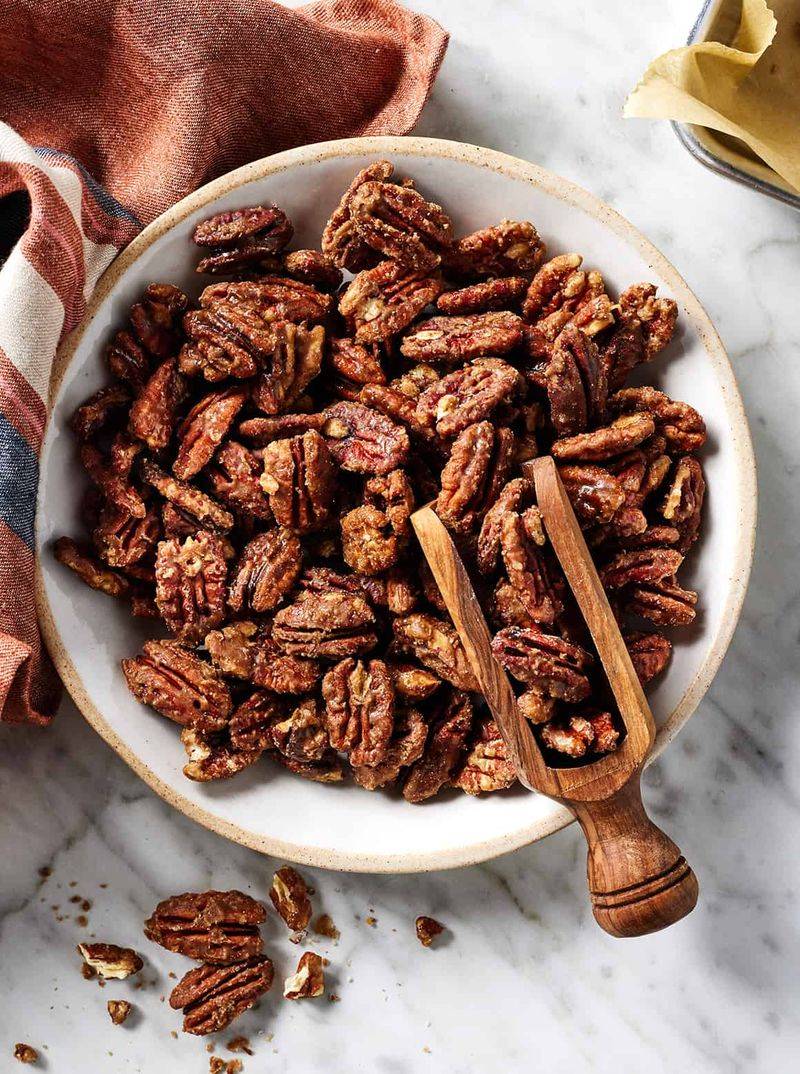
Sweet glazed pecans conjure thoughts of dessert more than healthy eating. Coated with sugar, butter, and spices, they are ideal for pies but not heart health.
The allure of sweetness can mask the underlying sugar content, turning a healthy nut into a sugary treat quickly. Though perfect for desserts, they’re not the best for everyday snacking.
Consider them a garnish rather than a go-to snack. Their richness and sweetness can be too much for regular consumption.
6. Flavored Cashews (Ranch, BBQ, etc.)
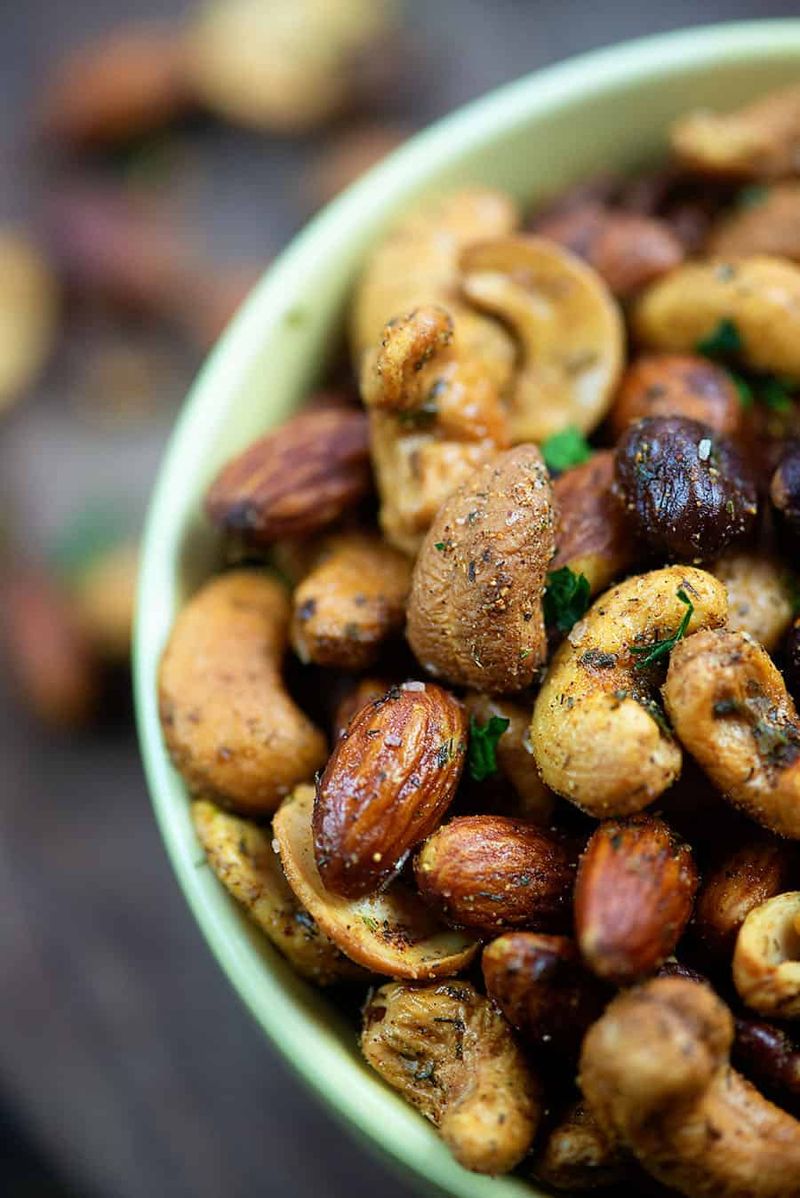
Flavored cashews present a culinary adventure with their variety, but they come with caveats. Naturally calorie-dense, adding artificial flavors and extra oils can make them a poor substitute for healthier snacks.
Their taste is enticing, yet the additional ingredients can detract from the cashews’ natural benefits. The allure of bold flavors may tempt, but be wary of the extra calories.
Ideally, enjoy them sparingly, savoring the taste without making them a staple.
7. Trail Mixes with Candy
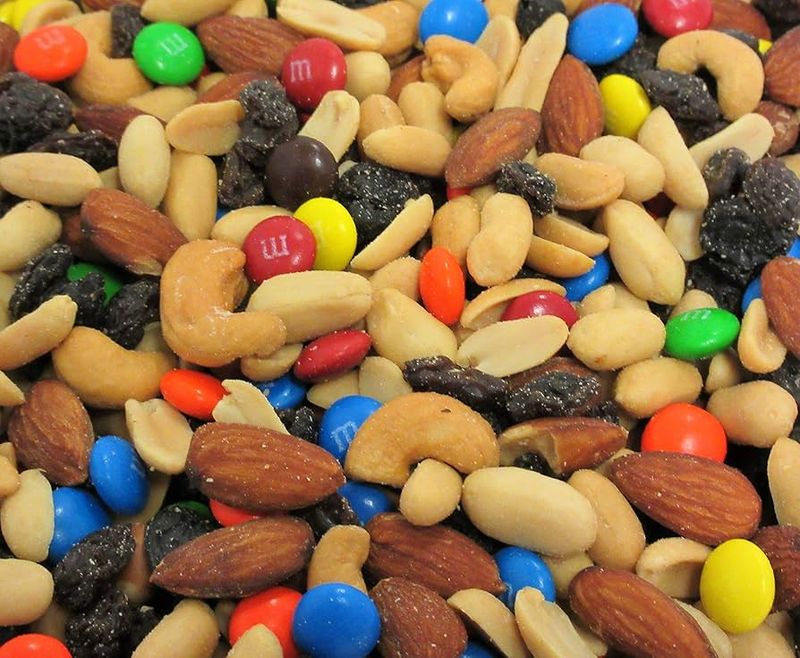
Trail mixes often promise a blend of nuts, fruits, and fun surprises, but candy additions like M&Ms turn them into a sugary indulgence. The sweet components can overshadow the healthier elements.
Though the mix seems balanced, the sugar content can spike quickly. Even naturally sweet fruits contribute to the sugar load.
While they are convenient, choosing mixes without candy can help maintain the healthy intentions.
8. Nut Bars with Syrup Binders
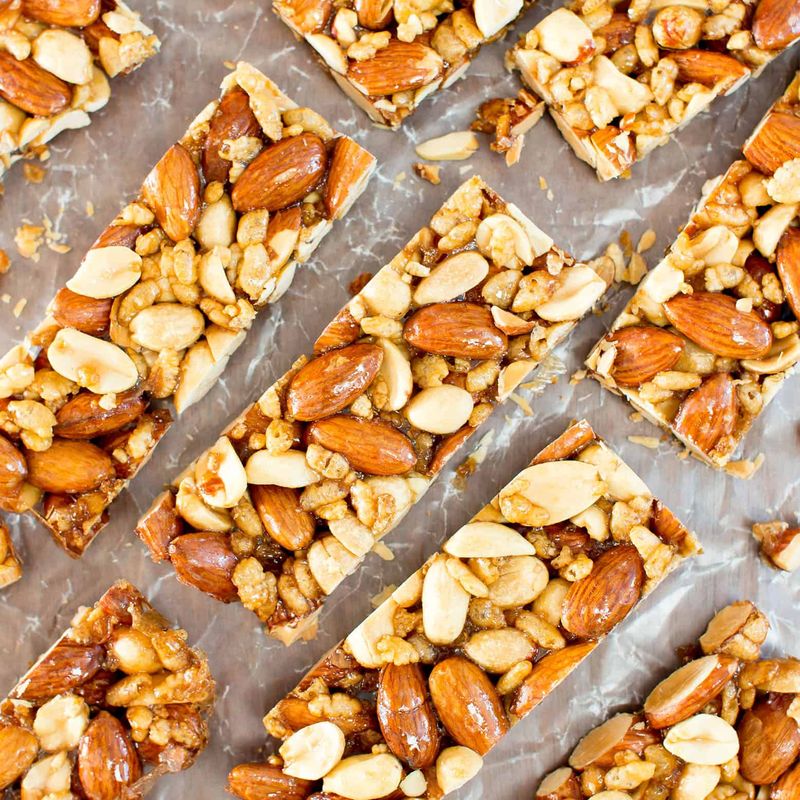
Nut bars often wear the guise of health but can be deceptive. Many are held together by glucose syrup, sugar, or honey, turning a seemingly healthy bar into something closer to dessert.
Their outer appearance suggests a wholesome treat, but the syrup binds them with extra calories and sugar. The appeal lies in their convenience, yet scrutiny reveals more bar than nut.
If seeking a truly healthy option, scrutinize ingredients and opt for minimally processed versions.
9. Macadamia Nuts
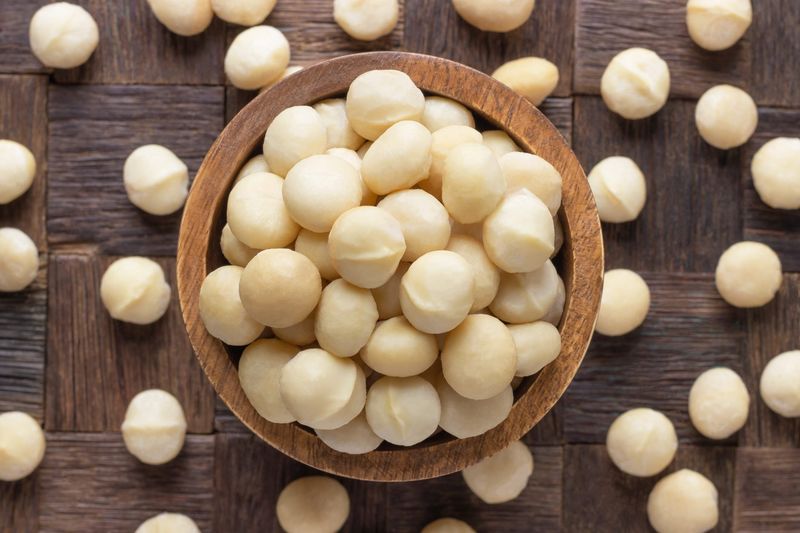
Macadamia nuts, with their buttery richness, are an indulgence that’s hard to resist. However, they come with high fat and calorie content, making moderation essential.
Their texture is creamy, and they can be easy to over-consume without realizing it. Despite their delightful taste, they don’t offer substantial filling power.
Consider them a luxury, enjoyed sparingly rather than a staple snack. Their richness is best appreciated in small doses, complementing other healthier options.
10. Pine Nuts
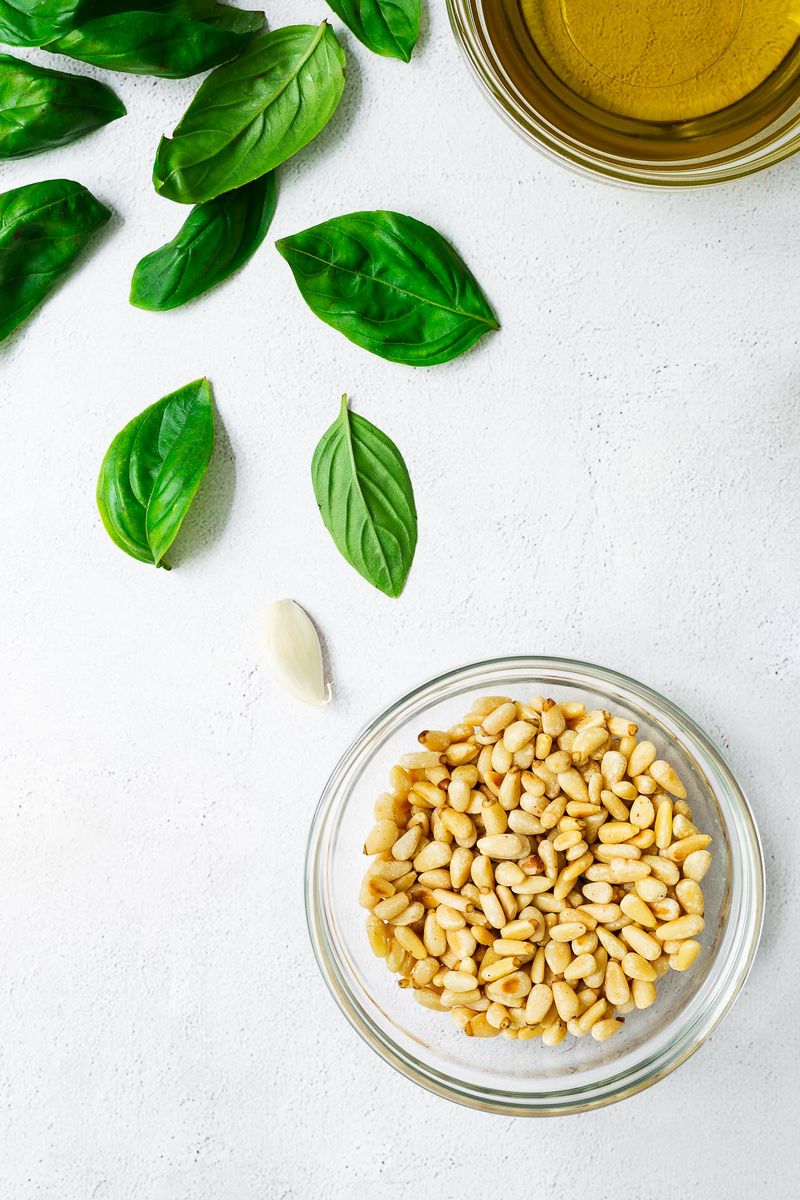
Pine nuts, familiar in pestos and salads, aren’t ideal for casual snacking. Prone to rancidity and loaded with omega-6s, they require careful storage.
Their unique flavor profile enhances dishes but doesn’t suit standalone consumption. The high omega-6 content suggests limitation due to imbalance concerns.
While they add flair to recipes, they’re best used sparingly, reserved for culinary enhancement rather than snacking.
11. Brazil Nuts
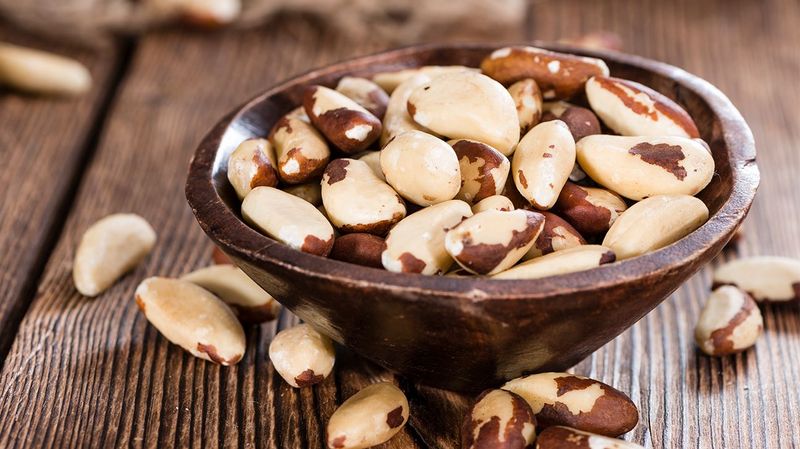
Brazil nuts are a powerhouse of selenium, but with this power comes responsibility. Just one or two daily suffice to meet selenium needs without risk.
Exceeding this can lead to selenium toxicity, a serious concern. Their rich, creamy taste tempts, yet moderation is critical.
Appreciate their nutritional benefit in small amounts, using them as a supplement rather than a main snack. The fine balance ensures health without hazard.
12. Chestnuts (Packaged or Glazed)

Chestnuts, especially when packaged or glazed, offer little in nutritional value despite being low in fat. Often sweetened and preserved, they lose much of their appeal as a healthful choice.
Their soft texture and mild sweetness may appeal, but they’re better suited for occasional enjoyment, not regular snacking. Nutrient content doesn’t justify frequent indulgence.
View them as a rare treat rather than a dietary staple. Their subtle flavor fits well in culinary creations but not as a primary nut snack.
13. Pecans (When Not Raw)
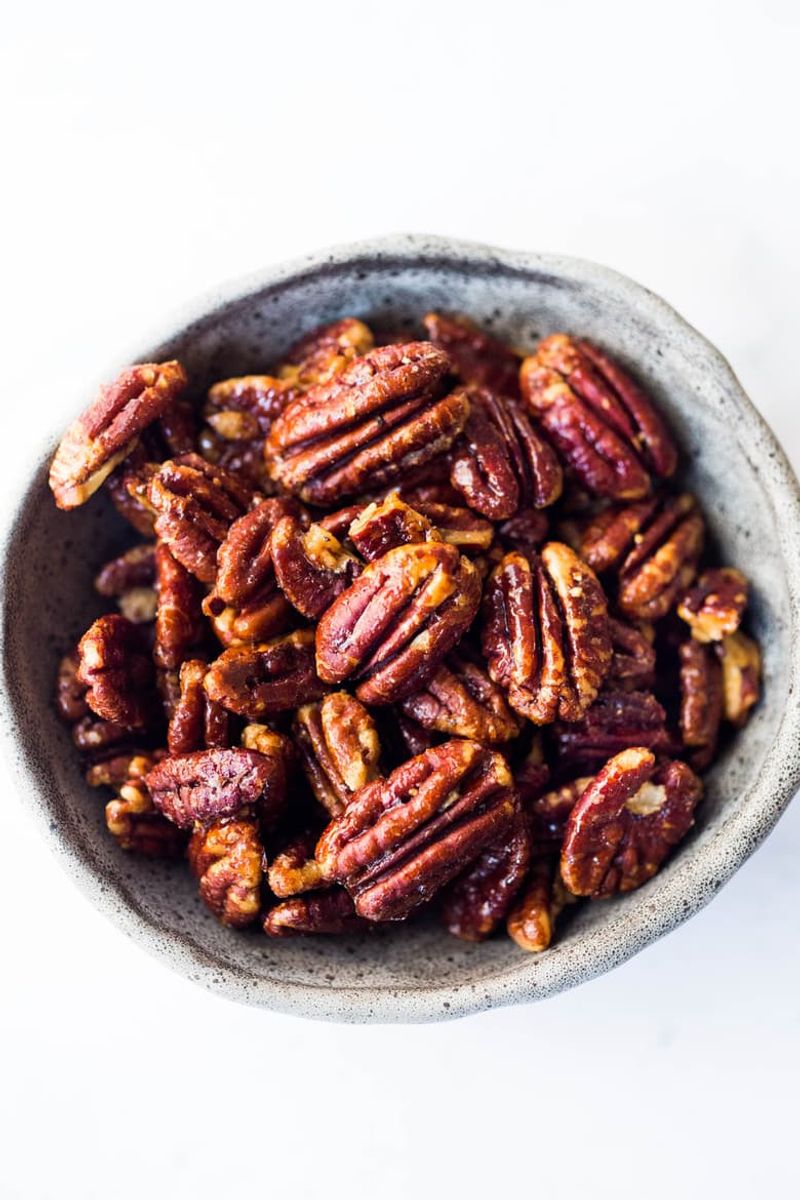
Pecans, when raw, offer good nutritional value, but once roasted in oil or sugar, their health benefits dim. Their buttery richness is often paired with sugar or oil, creating a more indulgent snack.
The transformation to a roasted form typically involves added calories that overshadow their natural goodness. Ideal consumption focuses on raw options.
For those seeking to maximize health benefits, raw pecans offer a more nutritious pathway, avoiding added ingredients that detract from their virtue.
